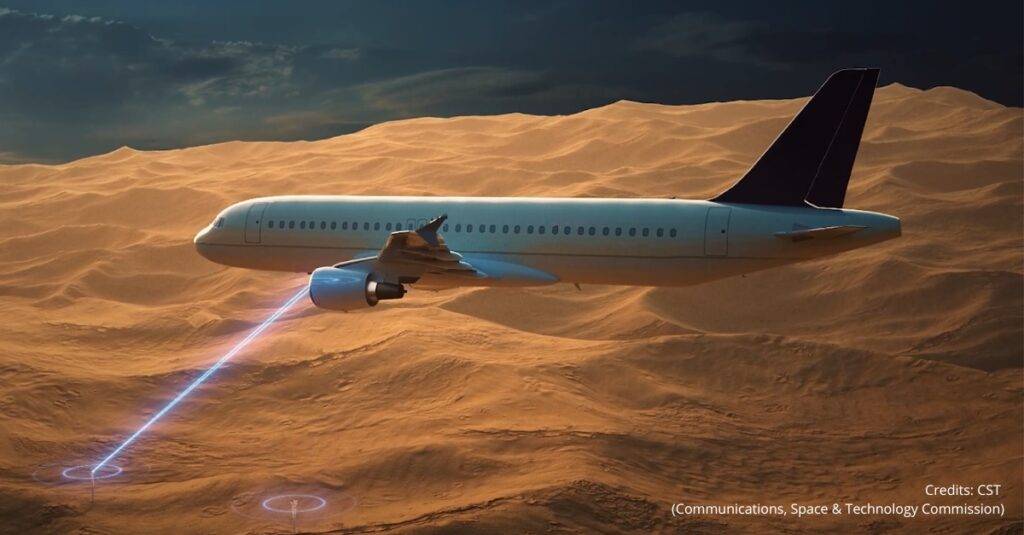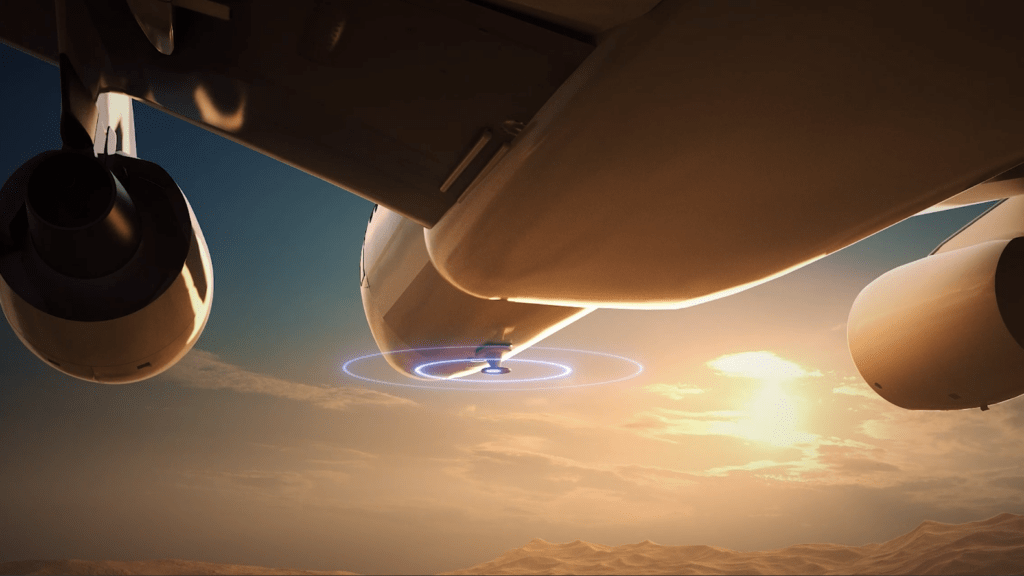


As passengers’ demand for seamless, high-speed inflight connectivity continues to grow, Air-to-Ground (A2G) connectivity is playing an increasingly important role in the aviation industry. But what exactly is A2G, and how does it compare to other technologies like satellite-based connectivity?

Photo credits: CST
(Communications, Space & Technology Commission)
Air-to-Ground (A2G) connectivity is a technology that allows aircraft to connect to the internet by communicating directly with ground-based cell towers. Unlike satellite connectivity, which involves signals traveling from an aircraft to satellites in space, A2G creates a much shorter communication loop, providing data through high-speed, low-latency links between the aircraft and the terrestrial network.
The result is a stable internet connection that can support various inflight services, such as browsing, streaming, and operational communications, especially on domestic or continental flights where ground coverage is extensive.
SkyFive is an inflight connectivity service provider that connects aircraft from the ground up, by means of its Air-to-Ground (A2G) technology. A2G leverages a dedicated network of cell towers with uptilted antennas on the ground and a coffee cup-sized antenna on the belly of the aircraft to establish a datalink that features high & consistent throughput, low latency, and uncontested capacity. This makes SkyFive’s A2G a go-to solution for airlines seeking high performance inflight connectivity for everyone in the cabin, without the exuberant cost and complexities of satellite communications. Open interfaces facilitate the integration with different cabin network & inflight entertainment solutions, as well as Internet applications, therewith giving choice to airlines and allowing them to create a unique online & offline experience for their passengers.
“Our mission is to deliver fast and reliable connectivity to every aircraft—especially the single-aisle fleet—in a way that all passengers can enjoy and afford it, and such that it makes commercial sense for the airline as well. We recently announced roaming between European Aviation Network, provided by our partner Viasat and powered by SkyFive’s A2G technology, and our networks in the Middle East, to facilitate continuous broadband connectivity between these 2 markets on flights lasting 6 hours and more. You will soon hear about more coverage footprint, which we are growing together with our local mobile operator partners in dense aviation markets.”, said Dirk Lindemeier, SkyFive’s Co-founder and Managing Director.
Gogo, now a significant player in the inflight connectivity space, offers A2G connectivity primarily across North America. Initially starting with legacy A2G systems, Gogo has evolved its technology over the years to enhance speed and reliability. Today, Gogo’s 5G network is positioned to deliver fast inflight internet with lower latency, particularly for business aviation and regional flights.
The company’s network leverages a mix of A2G and satellite technologies, depending on the flight’s route and coverage needs, but its A2G infrastructure remains its core strength for domestic flights.
SmartSky Networks, another A2G provider in the U.S., halted operations in August 2024 due to financial difficulties. However, it’s now being revived through an acquisition by Apcela, a company known for running advanced networking platforms. Apcela’s CEO, Mark Casey, sees potential in SmartSky’s patented technology, which uses air-to-ground communication to deliver high-speed inflight internet.
The acquisition is set to breathe new life into SmartSky’s operations, with Apcela planning to reorient the business towards more specialized networking needs for aviation, ensuring passengers and crew experience ground-like internet performance in the air. This comeback highlights the importance of agile, specialized networks in inflight connectivity.
1. Lower Latency: Since A2G uses ground-based cell towers, the communication path is much shorter compared to satellites, leading to reduced latency. This makes it ideal for real-time applications like video conferencing and gaming.
2. Cost-Effectiveness: A2G infrastructure is less expensive to deploy than satellite systems, particularly for short to medium-range flights. This can translate into more affordable services for airlines and passengers both from CAPEX and OPEX standpoints.
3. Scalability in Domestic Markets: A2G is particularly well-suited for domestic markets or flights that operate within regions with robust ground coverage, such as North America, Europe, Middle East.
1. Limited Coverage: One of the main drawbacks of A2G is its reliance on ground-based infrastructure, which limits its coverage to regions where a dense network of towers exists. This makes A2G unsuitable for long-haul international flights over oceans or remote areas where there are no cell towers.
2. Bandwidth Limitations: While A2G can provide high speeds, it may struggle to keep up with the growing data demands of passengers, particularly on heavily trafficked routes. Satellite networks generally offer more bandwidth flexibility, albeit at higher costs.
3. Interference and Reliability: Since A2G depends on terrestrial networks, it is more susceptible to issues like network congestion and weather-related interference, especially in areas with dense air traffic.
When deciding between A2G and satellite connectivity, airlines must consider their operational needs, passenger expectations, and budget. A2G is an excellent solution for short-haul and domestic flights where low latency and cost-effectiveness are priorities. However, for long-haul or international routes, where coverage is crucial, satellite remains the go-to solution. With companies like SkyFive, Gogo, and the revived SmartSky pushing the boundaries of A2G, this technology will continue to play a vital role in inflight connectivity, providing airlines with a flexible, efficient option for enhancing passenger experience.
TRAVELER’S MICRO-MOMENTS Home Capturing the Traveler's Micro-Moments 26 April 2022 microMoments, Technology, traveler Time Is No Longer Measured in Days,…
IFE TO THE RESCUE Home WHEN IFE COMES TO THE RESCUE OF FLIGHT ATTENDANTS! 25 June 2022 Digital Services, IFE,…
Digital AD: IVT-FREE Zone Home DIGITAL INFLIGHT ADVERTISING: AN IVT-FREE ZONE 20 May 2022 Advertising, IVTFREE, Technology In late 2015,…